This was published 6 years ago
Cape Kidnappers, New Zealand: A slice of heaven on the cliff tops
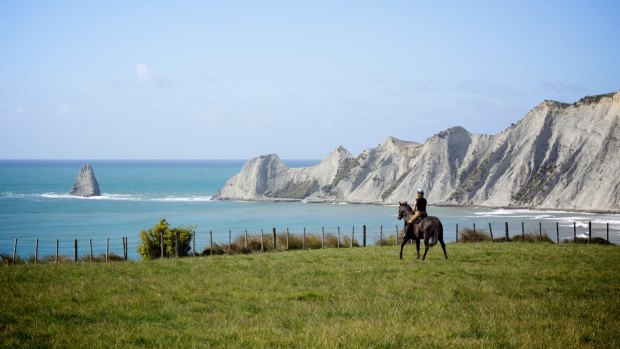
The Farm at Cape Kidnappers.
"See that down there?" Farmer Matt Nilsson is pointing at something just beneath the surface of the sea, below a rugged row of sharp rocks where waves are crashing, throwing white water high into the sky. Between breakers, the sea looks as transparent as glass, and I can see a series of deep trenches beneath the ocean. "It's like supermarket shelves down there," he says with a grin. "You name it, you got it: abalone, lobster, crab. Run your hands along there and you've got yourself the barbecue of the year."
Nilsson is taking me on a Can-Am (a Canadian-made all-terrain vehicle that goes where four-wheel-drives can't) tour across the property I'm staying at. He's as enthusiastic as a kid: partly because he loves this dry, rugged chunk of New Zealand's North Island; and partly because doing this takes him away from working on his own farm next door. "I'd rather be showing you all this than looking after 3000 sheep with smelly blokes in gum boots," he says.
"All this" is The Farm at Cape Kidnappers: a 22-room property, complete with day spa, built atop a headland of sheer-sided cliffs and deep wooded gorges that is home to New Zealand's largest mainland colony of gannets, the world's 16th best golf course (many say its most spectacular), and the largest wildlife restoration program in New Zealand for the country's endangered endemic animals. Below the rolling hills and river flats that serve as pasture land for sheep and cattle, New Zealand fur seals fish the blue Pacific and a pod of migratory orca just swam past us, barely 300 metres from the shore. Had I come a little later in the year, I'd just as likely see pods of southern right whales.
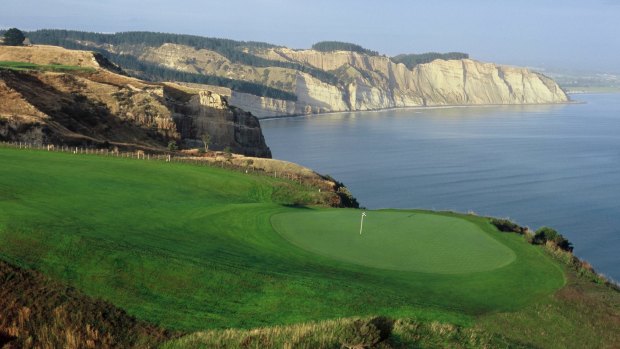
The course's signature hole is dubbed Pirate's Plank.
Nilsson manoeuvres the Can-Am over hilltops terraced like war bunkers and as hollow as honeycomb, and under gnarled trees with branches bent over double by centuries of blustering winter westerlies. We drive through a hidden green valley – a dry river bed sunken deep into this volcanic landscape – and up a steep rise; below us, a coastline of white sand beaches and steep rock cliffs stretches out. Nilsson drives along the beach, dodging waves that wash high up the shore, there are ancient Maori pa (hill fortress) sites in the dunes beside us. In fact, the cape is linked back to the origins of the Maori in New Zealand.
"There used to be a settlement for whalers right there," Nilsson says. "But these days you won't see a soul around for weeks on end. It gets lonely out here, even for the sheep."
Captain Cook anchored the Endeavour just a few hundred metres out from here. He gave this headland its name after local Hawke's Bay Maori tried to kidnap a young Tahitian boy from his ship in 1769. A century later, a Scottish family bought the land as pasture for livestock; 150 years on, some of it is still a working sheep and cattle farm. Staying here allows us to imagine what life must be like as a New Zealand sheep farmer, albeit a sheep farmer with Picassos on their walls, their own day spa and five-course degustation dinners served up each evening. There are as many as 20,000 breeding pairs of gannets nesting by the cliff edges of Cape Kidnappers, the youngsters grow bigger than their parents to garner strength for the eight-day, non-stop flight to Australia they'll take before they're back here to breed. It's a gannet airport round these cliffs, we watch from a few metres away as whole squadrons of gannets take off and land as awkwardly as any bird ever did.
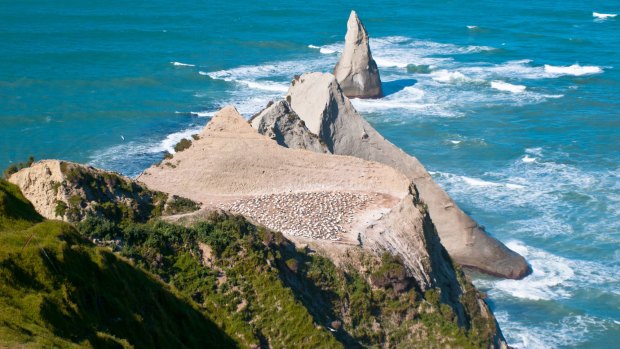
A gannet colony at Cape Kidnappers.
In three hours, we don't see another person across this 2400-hectare property; if there's a lonelier piece of coastline in the Antipodes, I've yet to see it. Though most guests at The Farm at Cape Kidnappers are content taking in these surroundings from the rustic lodge and from suites built up high on the cliffs, a half-kilometre back from the Pacific. It's a hell of a vantage point, in the evenings, as a half moon rises in the sky and the only sound is the bark of working sheep dogs clocking off for the day, I can see the twinkling lights of Napier across a pretty blue-water bay that wraps around like a wineglass.
Kitchen staff wander about with baskets picking herbs and vegetables from the garden below me, and a curious male pheasant joins me each day on the stroke of five to watch the sun set from my private balcony. He watches until the stars burn high above us, then I excuse myself to prepare for pre-dinner drinks by the open log fire.
There are horse rides across the property, and walks that take anywhere from 40 minutes to six hours, which sometimes end with a private picnic overlooking the sea; and excursions off-site to take you into the country's second biggest wine region, Hawke's Bay (which surrounds the cape).
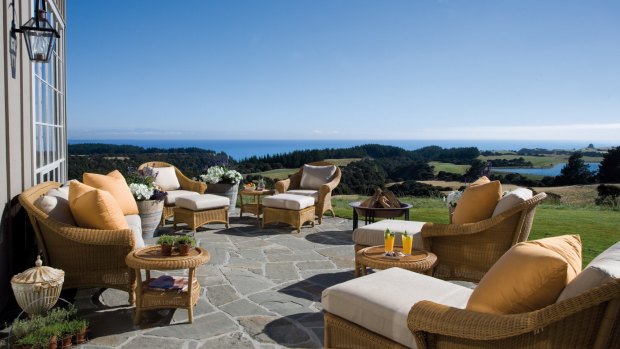
The lodge looks out over Hawke's Bay and the Pacific Ocean.
But it's the golf course that's got me here. Golfers travel from all over the globe to play Cape Kidnappers, not simply because of its ranking but because the tract of land the course is built on has the most challenging seaside topography of any golf course on earth. Holes are built in impossibly narrow valleys and on sheer ravines between the jagged ridges of the cape, and are linked by narrow, crumbly bridges of cliff. Poorly executed shots will disappear down cliffs that drop 200 metres into the Pacific. On one hole – the course's signature hole, rightly dubbed Pirate's Plank (the 15th) – it's advised not to look over the left side of the fairway if you have a fear of heights.
There are two Picassos on every wall of the day spa and there are tiles from a Tibetan monastery in the lodge that are almost 2500 years old, but in truth, I barely notice. I think it's the feeling of safe sanctuary that is far more valuable at Cape Kidnappers – guests and animals (a predator fence runs around the property) both protected from the outside world on a desolate, rugged headland on a coast where Maori once ruled.
TRIP NOTES
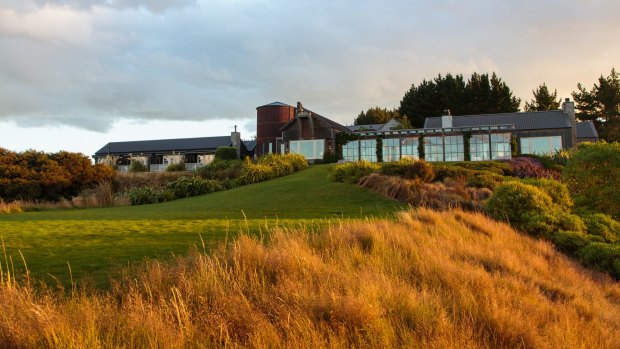
The Farm at Cape Kidnappers, Hawke's Bay.
MORE
traveller.com.au/new-zealand
hawkesbaynz.com.au
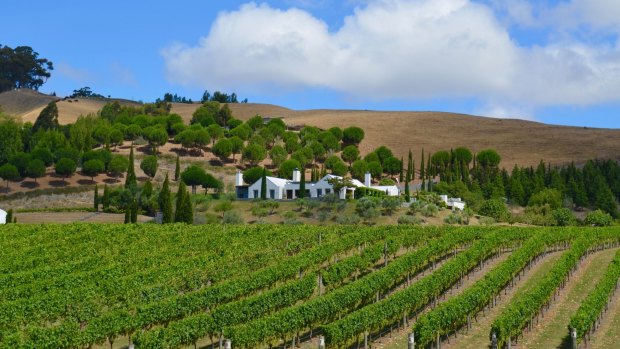
A winery in Hawke's Bay, New Zealand.
FLY
Air New Zealand flies to Napier via Auckland, Wellington or Christchurch, see airnz.com.au
STAY
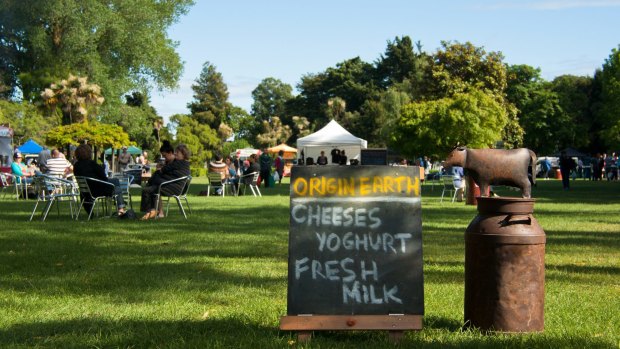
The farmers' market at the Hastings A & P Showgrounds.
The Farm at Cape Kidnappers has a package valid until September 30, 2017, where guests receive a $NZ400 lodge credit (a room, a night) to apply to a range of activities from golf to day spa. Room rates include pre-dinner drinks, dinner and breakfast for two. Suites are $NZ1997.50 a night. Phone +64 6 875 1900, see capekidnappers.com
Craig Tansley travelled courtesy of The Farm at Cape Kidnappers and Air New Zealand
FIVE THINGS TO DO IN HAWKE'S BAY
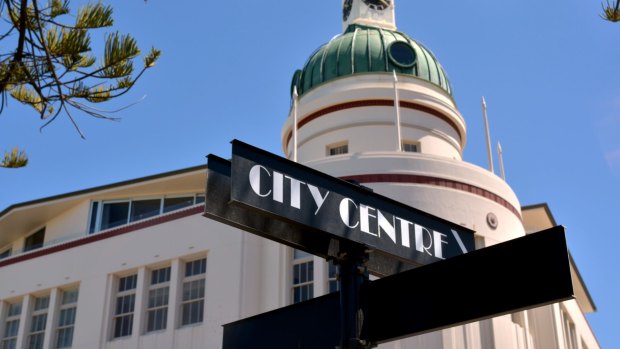
The centre of Napier, the art deco capital of New Zealand.
WINE TASTING
The Hawke's Bay region is New Zealand's oldest wine growing region, and its second largest. It's home to more than 80 wineries and offers tasting rooms and restaurants overlooking the ocean and the region's hilly hinterland. A fan of red wines? Hawke's Bay is New Zealand's largest producer. See www.hawkesbaywine.co.nz
CYCLING
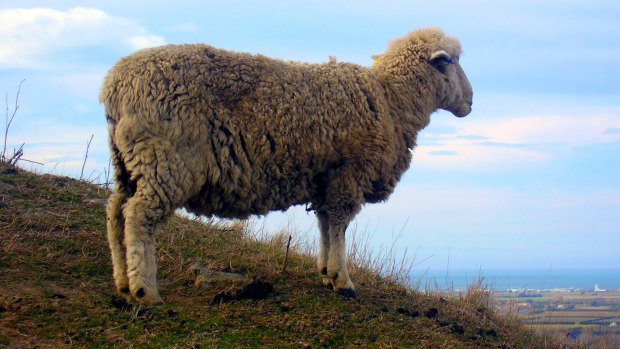
Sheep graze the pasture land.
There are more than200 kilometres of cycle trails between the coastal cities of Napier and Hastings across mostly flat terrain. Ride by the Pacific Ocean between tiny coastal communities beside Cape Kidnappers, or take a route through the wineries. See www.hawkesbaynz.com
ART DECO
An earthquake destroyed Napier in 1931, so the city was rebuilt in the architectural style of the era. It's now one of the best places on earth to see art deco architecture. Take a tour in 1930s vintage cars, or visit during the annual Art Deco Festival (next February 14-18). See www.artdeconapier.com
FOODIES
Hawke's Bay is one of New Zealand's gastronomical capitals, and it's known as the fruit bowl of New Zealand. It's home to some of New Zealand's best winery restaurants, and some of its finest seafood restaurants. It also has the country's oldest farmers' markets each weekend. See www.hawkesbaynz.com
GREAT WALK
You'll find one of NZ's most scenic walks – and one of its nine official Great Walks. The Lake Waikaremoana walk is a 46-kilometre, three-day hike through the largest remaining tract of native forest in the North Island. You can camp in huts by the lake. See www.doc.govt.nz
Sign up for the Traveller Deals newsletter
Get exclusive travel deals delivered straight to your inbox. Sign up now.